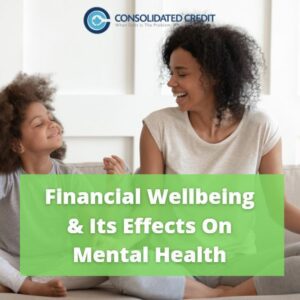At first glance, the new soft-saving trend might seem irresponsible and frivolous. Looking deeper there’s some substance to behold to this lifestyle. In fact, the mindset around soft-saving hits a sweet spot many have been longing for for a long time. It’s focused on the best of the here and now while not ignoring the unexpected and long-term.
This money management style isn’t necessarily the right path for everyone. There’s no room for complacency with this approach. If you’re ready for that, it’s certainly worth a deeper look.
What is soft-saving?
Soft-saving focuses on the here-and-now financial picture rather than the long-term. The emphasis is on spending money that fits your values and goals now instead of something decades down the road that may never happen. For example, they’ll pay top dollar for a yoga class rather than topping up their RRSP because they value fitness.
The keyword to successful soft-saving is value. Those following this method aren’t spending willy-nilly. They’re making thoughtful choices about where they want to spend their money.
It’s not that soft-savers don’t save anything. They do save. They just don’t put as much emphasis on it as typical financial advice does.
How did it start?
For quite a while society was big on hustling and grinding. Doing more and no sleep was almost a badge of honour. We saw the Girl Boss and Financial Indepent Retire Early movements making waves. Junior high science class taught us that for every action there is an equal opposite reaction. Enter, soft-living.
Newer trends like quiet quitting and soft-living are the opposition to this go-go-go point of view. They value mental health over money and power. Its motto is to enjoy simple pleasures while minimizing stress. Soft-saving was born from soft-living.
Soft-saving fits the soft-living keystone of simple pleasures by encouraging people to spend on those things that bring them joy, like hobbies and luxuries. It addresses the less stress keystone by promoting that people live within their means and have a safety net fund.
There’s a disheartening side to why the soft–saving movement started. Many are disheartened. They’ve come to believe homeownership, retirement, and even parenthood are pipe dreams. They’re left questioning the idea of putting money towards something that will never happen. As a result, they looked for another way to manage their money.
Benefits
Quality of life
This approach to money centres around quality of life. You’re putting focus on the present and the things that bring you joy. That means more time spent pursuing hobbies and interests, better work-life balance, and the flexibility for your spending to change along with you.
Mental health
Staying true to who you are and living a life that reflects that truth is a great foundation for good mental health. Soft=saving can support that by asking you to make thoughtful spending choices that match your values. This also relieves the pressure to “keep up the Joneses”.
Financial literacy
To follow this trend responsibly requires having a strong understanding of financial knowledge and diligence in putting that knowledge to use consistently. Basic personal finance practices like having an emergency fund, budgeting, and mitigating lifestyle inflation are a necessity to follow this trend and stay financially healthy. These are great skills for everyone to have!
Drawbacks
Loss of compound interest
The biggest downfall to soft-saving is lost income from compounding interest. Unlike simple interest, compounding interest is when you earn interest on the interest you’ve already earned. The longer the funds are set aside to build interest the more and quicker the funds add up. Here’s an example:
If you invest $10,000 at a 5% interest rate in 5 years you’ll have $12,833.59. After 10 years though, that same $10,000 turns into $16,470.09. That’s a lot of extra money without any extra effort.
Following the soft-saving method means less emphasis on putting money aside which means losing out on the benefits of compounding interest.
Risky
Life is known for its affinity for the unexpected. We often don’t see things like losing a job, divorce, or serious injury coming. It’s these life surprises where having savings set aside becomes a lifeline. Not having anything set aside will quickly turn a person’s life upside down. That’s a risk anyone doing this trend needs to be aware of and be prepared for.
Not ideal for long-term
Soft-saving is about present-day finances rather than the distant future. It’s important that followers are aware of the trade-offs. You may be more comfortable now, but that’s likely at the sacrifice of comforts later. While there’s nothing technically wrong with the decision to forgo future comfort, doing so without being aware can really cause issues down the road.
How to soft-save safely
If soft-saving sounds like something you want to try here are a few tips to do it safely and successfully.
- Have an emergency fund
- Don’t ignore saving all together
- Make a habit of reusing existing stuff first
- Budget and live within your means
- Get comfortable making mindful choices
Wrap up
There’s an interesting dichotomy to soft-saving. To do it well and mitigate the risks associated with it requires a solid foundation of financial knowledge. The irony is that most financial literacy resources would encourage saving. This means those who soft-save and do it right are actually forgoing some of the most common advice on a topic in which they are well versed.
Looking deeper into this dichotomy, in a way, it makes sense. At first glance, soft saving may look like a financial trend, but at its core, it’s really about choice. Making deliberate choices with full awareness of the benefits and downfalls of those choices. That approach isn’t just good for finances it’s good for life.
If you want to boost your financial knowledge so you can take a crack at soft-saving, browse through our website some more. We’ve got lots of resources to set you up for success. Want to clear out some debt before trying soft-saving? Contact one of our trained Credit Counsellors for help. They can help you determine what path to debt-free living is best for your situation.





